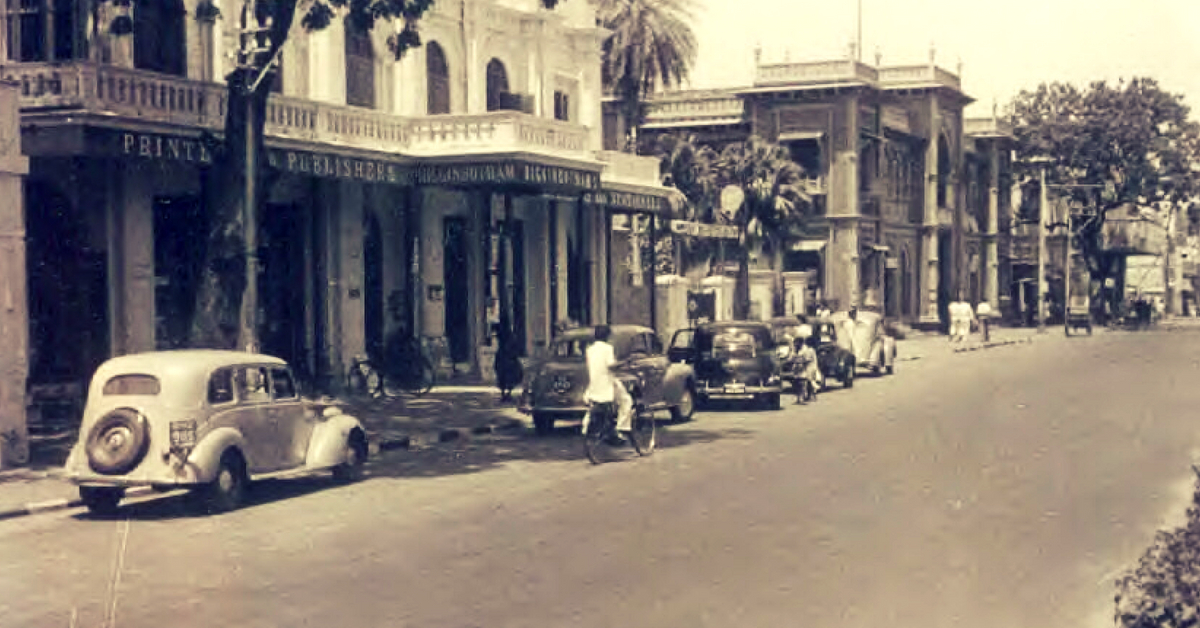What’s in a Name: Why Madras Became Chennai 22 Years Ago on July 17
There are various theories about the dual etymology of the city, ranging from government reports to local tales carried forward by the older generations residing in the city.

On July 17 1996, the city of Madras was officially christened as Chennai by the state government of Tamil Nadu; and in doing so, it broke free from the centuries-old legacy stamped by British colonisers who acquired the coastal region and made it their southern headquarters in the mid-sixteenth century.
As much as the residents of Chennai believe that the former name truly holds the essence and old-world charm of their city, the fact that the current name isn’t relatable or comparably alien can be quashed with many interesting historical records.
It is believed that both Madras and Chennai have been derived from the towns of Madrasapattinam and Chennapatnam that together encompass the city as we know it today.
There are various theories about the dual etymology of the city, ranging from government reports to local tales carried forward by the older generations residing in the city.

A prominent one is that the area which went to constitute the premises of the British East India Company— including the seaport, Fort St George, the company’s administrative seat, St Mary’s church and the adjoining residential area—was originally acquired from a Telugu-speaking landlord named Chinnappa Naicker, and the sale deed and transaction records can be found in Government Archives of Madras at Egmore.
It is believed that the locale was named Chennai Pattinam after the man and was used by the inhabitants for over 300 years. However, this theory doesn’t quite explain how the British latched onto the Madras moniker and how the entire region annexed by the Company went on to become the Madras Presidency.
There is another explanation, which goes all the way back to 1639, that sheds light over how the present day city acquired its dual etymology of Madras-Chennai.

The site chosen by the East India Company included two small villages—Madrasapattinam and Chennapatnam. Madrasapattinam is believed to be located to the north of Fort St George, and it is quite probable that the former village existed much before the Company acquired the region in the 1600s and the colonisers derived and christened their territory as Madras, from its name.
The village of Chennapatnam is believed to have situated towards the south of the Fort, which was named by the Nayak of Wandiwash, Damarla Venkatadri Nayakudu, in the memory of his father Damarla Chennappa Nayakudu, who was the governor during the reign of the last Raja of Chandragiri, Sri Ranga Raya VI, of the Vijayanagara Empire. In fact, Madrasapattinam finds a mention in the very first grant sanctioned by Damarla Venkatadri.
However, some believe that Chennapatnam was the original area where the Fort was constructed, and this included the ‘new’ town that was rapidly developing around it.

It isn’t quite certain if the new town retained the name in deference to Damarla Venkatadri’s wishes or because the site originally bore that name.
Interestingly, both the villages have been distinctly mentioned as separate in all known records, yet the intervening space between the northern Madrasapattinam and the southern Chennapatnam merged so swiftly that before one knew, the two villages began to be considered virtually as one united town. As time passed by, the confusion over both Madrasapattinam and Chennapatnam increased. One was constantly mistaken for the other, and slowly, their exact locations were lost forever.
While the British preferred to stick with Madrasapattinam and eventually Madras, the local people chose to go by the name of Chennapatnam, which had a Dravidian connection and is believed to have originated from the Telugu word for beautiful, i.e., Chennu.
Another theory attributes the etymology of Madras having Portuguese links from the name Madre de Sois, taking after a Portuguese high authority, who was amongst the early settlers in the region along Coromandel coast in the 1500s.

Despite India gaining independence in 1947, it was only after around five decades that the city was rechristened as Chennai on this date, as part of the nationwide drive to replace anglicised names with native terminologies.
While discussions and debates over which names suits the city better continue to ensue, one mustn’t forget the fact that Madras and Chennai are like the two sides of the same coin that collaboratively form an intrinsic thread of the historical and cultural fabric of the city.
(Edited by Gayatri Mishra)
Like this story? Or have something to share?
Write to us: [email protected]
Connect with us on Facebook and Twitter.
NEW: Click here to get positive news on WhatsApp!
If you found our stories insightful, informative, or even just enjoyable, we invite you to consider making a voluntary payment to support the work we do at The Better India. Your contribution helps us continue producing quality content that educates, inspires, and drives positive change.
Choose one of the payment options below for your contribution-
By paying for the stories you value, you directly contribute to sustaining our efforts focused on making a difference in the world. Together, let’s ensure that impactful stories continue to be told and shared, enriching lives and communities alike.
Thank you for your support. Here are some frequently asked questions you might find helpful to know why you are contributing?


This story made me
-
97
-
121
-
89
-
167













